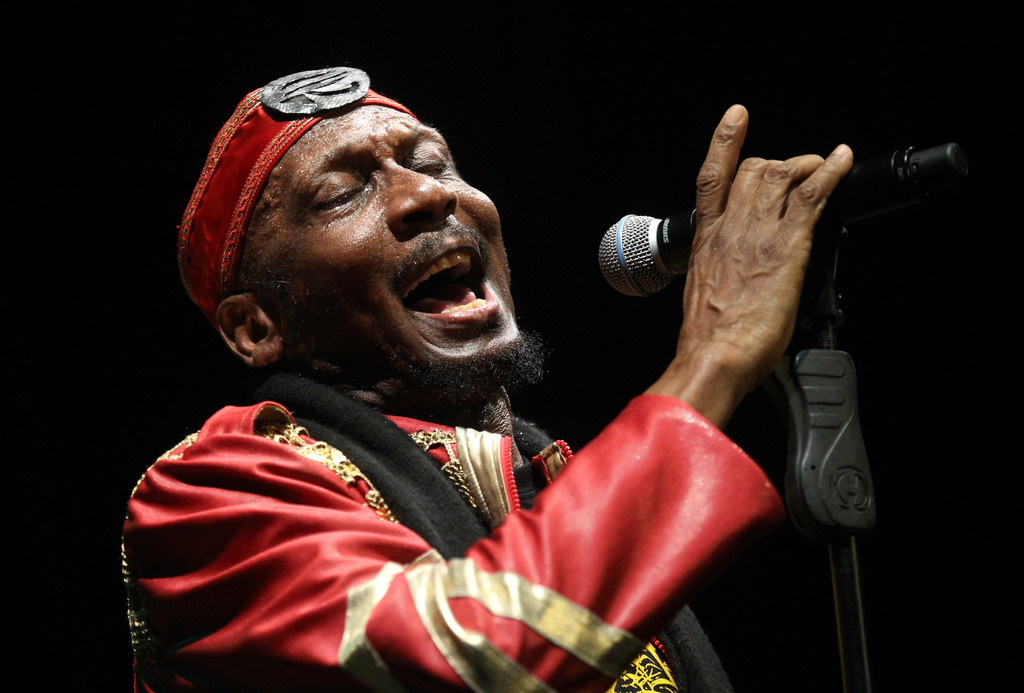Las Vegas is being flooded with lore about organized crime after a second set of human remains emerged within a week from the depths of a drought-stricken Colorado River reservoir just a 30-minute drive from the notoriously mob-founded Strip.
“There’s no telling what we’ll find in Lake Mead,” former Las Vegas Mayor Oscar Goodman said Monday. “It’s not a bad place to dump a body."
Goodman, as a lawyer, represented mob figures including the ill-fated Anthony “Tony the Ant” Spilotro before serving three terms as a martini-toting mayor making public appearances with a showgirl on each arm.
He declined to name names about who might turn up in the vast reservoir formed by Hoover Dam between Nevada and Arizona.
“I’m relatively sure it was not Jimmy Hoffa,” he laughed. But he added that a lot of his former clients seemed interested in “climate control” — mob speak for keeping the lake level up and bodies down in their watery graves.
Instead, the world now has climate change, and the surface of Lake Mead has dropped more than 170 feet since 1983.
The lake that slakes the thirst of 40 million people in cities, farms and tribes across seven Southwestern states is down to about 30% of capacity.
“If the lake goes down much farther, it’s very possible we’re going to have some very interesting things surface,” observed Michael Green, a University of Nevada, Las Vegas history professor whose father dealt blackjack for decades at casinos including the Stardust and the Showboat.
“I wouldn’t bet the mortgage that we’re going to solve who killed Bugsy Siegel,” Green said, referring to the infamous gangster who opened the Flamingo in 1946 on what would become the Strip. Siegel was shot dead in 1947 in Beverly Hills, California. His assassin has never been identified.
“But I would be willing to bet there are going to be a few more bodies,” Green said.
First, the dropping lake level exposed Las Vegas’ uppermost drinking water intake on April 25, forcing the regional water authority to switch to a deep-lake intake it completed in 2020 to continue to supply casinos, suburbs and 2.4 million residents and 40 million tourists per year.
The following weekend, boaters spotted the decomposed body of a man in a rusted barrel stuck in the mud of newly exposed shoreline.
The corpse has not been identified, but Las Vegas police say he had been shot, probably between the mid-1970s and the early 1980s, according to the shoes found with him. The death is being investigated as a homicide.
On Saturday, two sisters from suburban Henderson who were paddle boarding on the lake near a former marina resort noticed bones on a newly surfaced sand bar more than 9 miles from the barrel.
Lindsey Melvin, who took photos of their find, said they thought at first it was the skeleton of a bighorn sheep native to the region. A closer look revealed a human jaw with teeth. They called park rangers, and the National Park Service confirmed in a statement that the bones were human.
There was no immediate evidence of foul play, Las Vegas police said Monday, and they are not investigating. A homicide probe would be opened if the Clark County coroner determines the death was suspicious, the department said in a statement.
More bodies will be discovered, predicted Geoff Schumacher, vice president of The Mob Museum, a renovated historic downtown Las Vegas post office and federal building that opened in 2012 as The National Museum of Organized Crime & Law Enforcement.
“I think a lot of these individuals will likely have been drowning victims,” Schumacher said, referring to boaters and swimmers who’ve never been found. “But a barrel has a signature of a mob hit. Stuffing a body in a barrel. Sometimes they would dump it in the water.”
Whatever story emerges about the body in the barrel, Goodman predicted it will add to the lore of a city that, with lake water, sprouted from a creosote bush-covered desert to become a marquee gambling mecca.
“We have a very interesting background," Goodman said. “It certainly adds to the mystique of Las Vegas.”
Additional reporting by The Associated Press.



 Police: Body In Barrel In Lake Mead Was Man Who Had Been Shot
Police: Body In Barrel In Lake Mead Was Man Who Had Been Shot Lake Mead Reckons With A Growing Water Deficit
Lake Mead Reckons With A Growing Water Deficit






